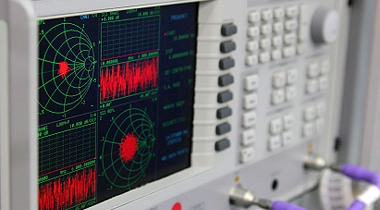

Electromagnetic Compatibility (EMC) is an area of product design which should be considered from the outset of any new project.
Failure to do so often results in expensive and difficult redesign work, with knock-on delays to project timescales and repeat visits to a test house to verify new work carried out and aid diagnosis.
Non-compliance with the applicable standards not only means a product can not be sold, but may mean a product is less reliable or effective in the real world than it might appear in the development lab or in the sales demo.
The cost of fixing issues 'in the field' can be much more significant than addressing them in the design phase.
Wireless Solutions has extensive experience in EMC related activities at all stages of the product lifecycle, from initial 'white paper' design concept through to addressing specific one-off installation issues.
Redesign of the main RF pcb of a mobile phone basestation to address issues with spurious signal emission at the pre-production phase of the project.
Signals generated on and radiating from the pcb were failing the applicable standard, but almost as importantly, by coupling from one area of circuitry to another, were limiting the performance of the system as a whole.
Redesign required two iterations of the RF PCB, and some minor mechanical design changes, in order to achieve full compliance.
To address a site-specific issue with analogue video interface for a CCTV camera, where the customer had already tried various commonly used products in the industry to address the problem.
Wireless Solutions produced a prototype design providing isolation of bidirectional RS485 signals as well as analogue video, with high picture quality.
Implemented as a one-off solution for a particular circumstance, the knowledge and experience gained was of direct relevance in later designs, when considering the difficult trade-offs between cost and resilience.
The product, in use by Governmental security agencies, was not required to meet the 'usual' EMC standards, but was found to produce significant energy at a few frequencies, both by radiation and conduction, while configured for vehicle mounted operation.
Resolution involved relayout of one PCB within the system to resolve radiated emission issues, changes to the power supply design and inclusion of a new power filter module designed to be effective with minimum changes to the existing unit design.
The combined set of changes formed both an upgrade for future production and a retrofit package for existing systems.